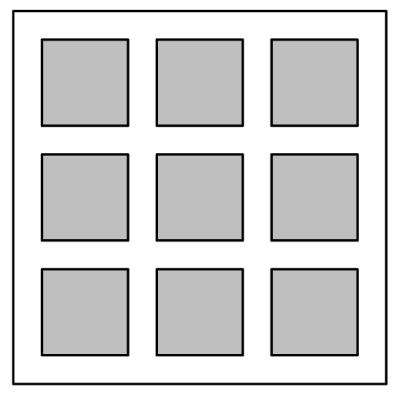2020 AMC 8
Complete problem set with solutions and individual problem pages
A large square region is paved with gray square tiles, each measuring inches on a side. A border inches wide surrounds each tile. The figure below shows the case for . When , the gray tiles cover of the area of the large square region. What is the ratio for this larger value of

- A.
- B.
- C.
- D.
- E.
Solution 1
The area of the shaded region is . To find the area of the large square, we note that there is a -inch border between each of the pairs of consecutive squares, as well as from between the first/last squares and the large square, for a total of times the length of the border, i.e. . Adding this to the total length of the consecutive squares, which is , the side length of the large square is , yielding the equation . Taking the square root of both sides (and using the fact that lengths are non-negative) gives , and cross-multiplying now gives .
Solution 2
WLOG (Without Loss of Generality), we may let (since will be determined by the scale of , and we are only interested in the ratio ). Then, as the total area of the gray tiles is simply , the large square has area , making the side of the large square . As in Solution 1, the side length of the large square consists of the total length of the gray tiles and lots of the border, so the length of the border is . Since if , the answer is .
